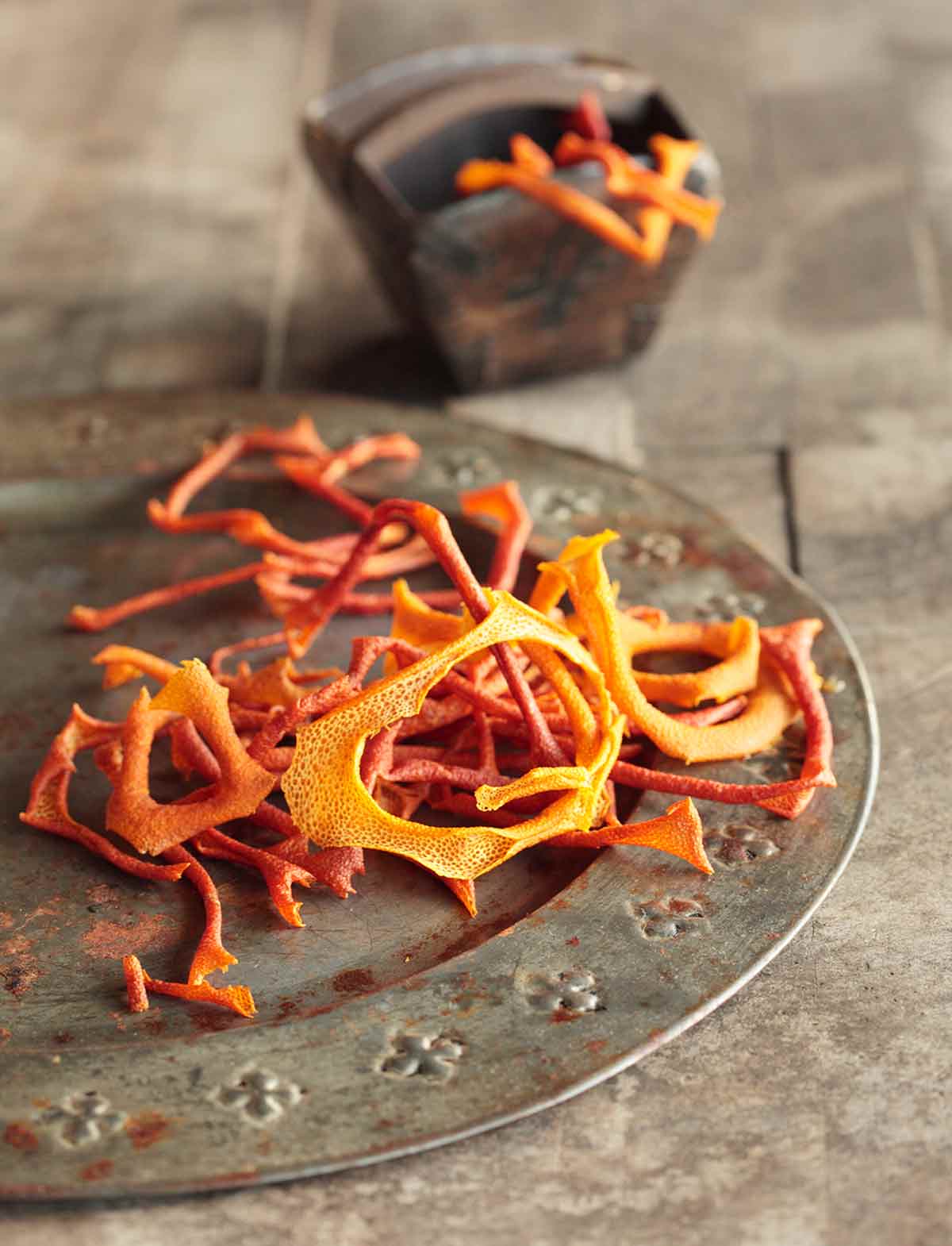
Knowing how to make dried orange peel is old-fashioned and frugal. Both admirable traits. Yet it imparts such a restaurant-worthy vibe to all manner of cooking and baking. And you make it simply by leaving strips of orange peel at room temperature. That’s it. Make a stash and keep the dried orange peel (or lemon) at your disposal for everyday cooking and baking.–David Leite
How do I make dried orange slices?
To make dried citrus slices (we’re talking lemon, orange, grapefruit, or lime slices) as opposed to dried zest, cut the fruit no thicker than 1/4 inch and place it on baking sheets lined with parchment paper. Shove in an oven heated to its lowest temperature with the fan on and the door slightly ajar. Flip the slices after about 2 hours and keep cooking, flipping the slices every 2 hours, until there’s no moisture left and the slices are dry to the touch yet still slightly pliable, a total of 4 to 9 hours. [Editor’s Note: The timing will vary rather dramatically depending on the thickness of the slices and the temperature of your oven.] Turn the oven off and let the slices cool in the oven with the door still slightly ajar. Store in a jar in a cool, dark place for up to 12 months.

How to Make Dried Orange Peel
Ingredients
- Mandarins or oranges, preferably organic (or substitute lemons)
- Wire rack
Instructions
- Scrub the citrus and pat it dry. Grab a vegetable peeler and remove the rind in strips, being careful to remove as little of the underlying bitter white pith as possible.
- Place the strips of citrus rind in a single layer on a wire rack and forget about them at cool room temperature until completely dry to the touch, which can take a couple days or longer.
- Once the citrus peel is dry to the touch, store the strips in a jar or other resealable container in a cool, dark place for up to 12 months. Originally published February 3, 2016.
Nutrition
Nutrition information is automatically calculated, so should only be used as an approximation.
Recipe Testers’ Reviews
I tried the dried citrus slices using oranges and tangerines. My lowest oven temperature was 170°F. I’ve used the dried orange peel in tea, stew, and even seafood soup for further flavor.
Now you have no excuse for ever letting another lemon, lime, orange, grapefruit, satsuma, citron, clementine—you get the picture—turn into an unsliceable rock on your counter. If you’re using the juice but have no plans for the zest, go ahead and peel it as instructed here and let it dry in the open air. I’ve done this accidentally many times with imperfect zest left over from cocktail-making. But it’s worth doing intentionally as well. You can throw the dried orange peels into stocks and they will add a bright, vibrant zing. Besides adding them to stock, you can pulverize them in a spice grinder and combine with other seasonings to make a citrus-based seasoning salt or rub.
You can speed up the process in a dehydrator, but the beauty of citrus peels is that it really isn’t necessary. They dry nicely at room temperature without molding. I also tried lemon slices dried in the oven. The lowest temperature for my oven is 180°F. At this temperature, the lemon slices dried out in about 2 1/2 hours, with a flip somewhere in between. These, too, are also a lovely addition to a soup or stock, and a great way to use up an excess lemon (or other citrus fruit) before it gets too hard to slice.











Oh super! I’ve got an oven with a dehydration cycle and citrus trees. …but I’m saving the lemon zests for limoncello!
Nice, Rainey. Definitely hang on to those lemon zests for your limoncello, but if you’ve got oranges, give this a try. Can’t wait to hear how it turns out.
My oven has a “warm” setting, which I apparently ignored for the longest time… the lowest temp is 140 degrees. I use this for beef jerky, after I get it up to 160 to kill bacteria (door cracked with a wooden spoon). I’m sure it would work well for this and some dried fruits/veg as well.
Lovely and brilliant, Shannon, thank you so much for sharing your trick! Greatly appreciate it!